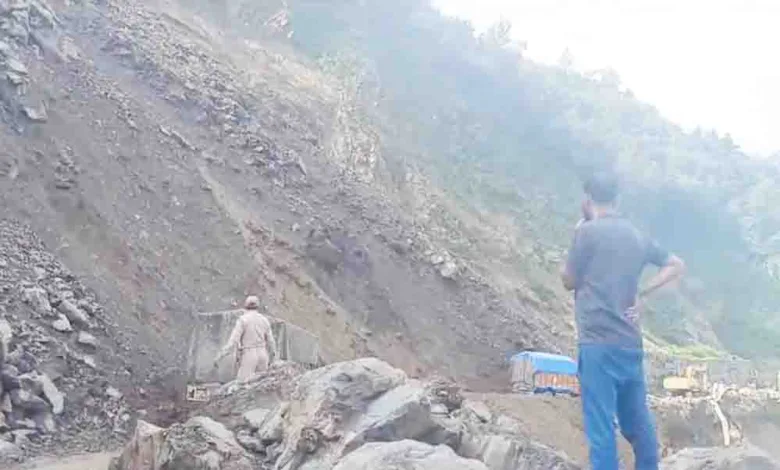Axing thousands of trees for road widening to invite disaster to Gangotri: experts

Sunday, 27 AUGUST 2023 | VINOD CHAMOLI | NEW TEHRI
Traffic on the Rishikesh-Chamba national highway was disrupted for many days due to landslide at Bagaddhar.Observers point out that this is in contradiction to the claims of year-round traffic movement on the Char Dham circuit with the construction of the all-weather project. Geologists and environmentalists point out that the authorities need to learn from this example and look for other alternatives rather than axing thousands of mature trees and saplings to widen the stretch of the Rishikesh-Gangotri national highway from Uttarkashi to Bhaironghati near Gangotri. Geologists warn that cutting thousands of trees in the geologically and ecologically sensitive region will result in major destruction from landslide and other factors.
The Rishikesh-Chamba highway was widened as part of the all-weather road project but the claims of the authorities were exposed during the monsoon this year. The highway was repeatedly blocked by landslide at Bagaddhar near Narendranagarin Tehri district following rains. The highway was blocked by debris in the morning of August 22 and could be reopened only on the morning of August 25. Citing the example of this stretch of the highway environmentalists and geologists stress that the authorities should avoid felling more than 10,000 trees marked for the axe to widen the highway from Uttarkashi to Gangotri. Noted geologist Naveen Juyal said that cutting such a large number of trees in the Bhagirathi eco-sensitive zone is not a sensible plan. He said that the forests from Jhala to Jangla area also provide protection from avalanches. Landslides may be set off if the trees in this area area chopped. He suggested that the authorities should consider the option of building an elevated road instead of cutting thousands of trees to widen the existing highway. Member of the Supreme Court appointed high powered committee on the all-weather road project, Hemant Dhyani said that roads should be widened in a limited way in the higher Himalayan regions. A road width of 5.5 metres to seven metres is adequate in this region of Uttarkashi and the widening should be done with limited cutting and filling. Noted environmentalist Jagat singh Chowdhary ‘Junglee’ said that Devdar, Thuner, Bank (oak), Buransh (rhododendron) and other tree species play a vital role in strengthening the ecology and maintaining the weather cycle in the higher Himalayan regions. Protecting such trees is of utmost importance as destroying them will cause major damage and harm the entire ecological system. He added that these trees species are also the main basis of most water sources in the Himalayan region and destroying the trees will also impact the water sources negatively. He said that instead of cutting thousands of trees, the authorities should widen the highway using pillars and bridges. Another environmentalist Suresh Bhai said that about 95 kilometres of the highway between Uttarkashi and Gangotri is to be widened. About 10,000 trees of various species including the Deodar are to be axed for this purpose and these trees have already been marked for cutting. The Forest department has marked only the big trees for cutting but countless saplings and other rich biodiversity in between the big trees have been removed. Considering this, one can say that more than two lakh Deodar trees are slated to be destroyed in this area, he claimed. He said that the alignment of the road should be altered and it should be constructed from Jaspur to Jhala via Harshi-Mukhba to avoid cutting the trees. Indiscriminate cutting of trees will cause irreparable damage to the Bhagirathi eco-sensitive zone which is also vulnerable to earthquakes and varied disasters.




